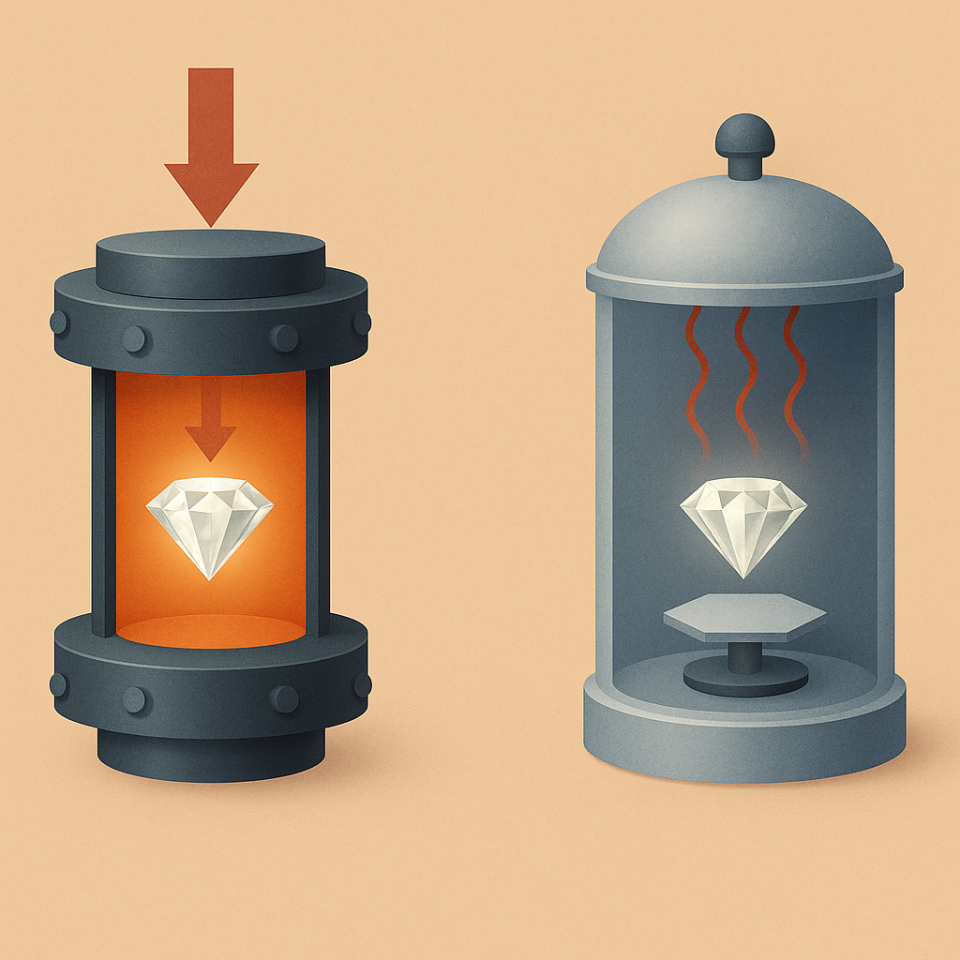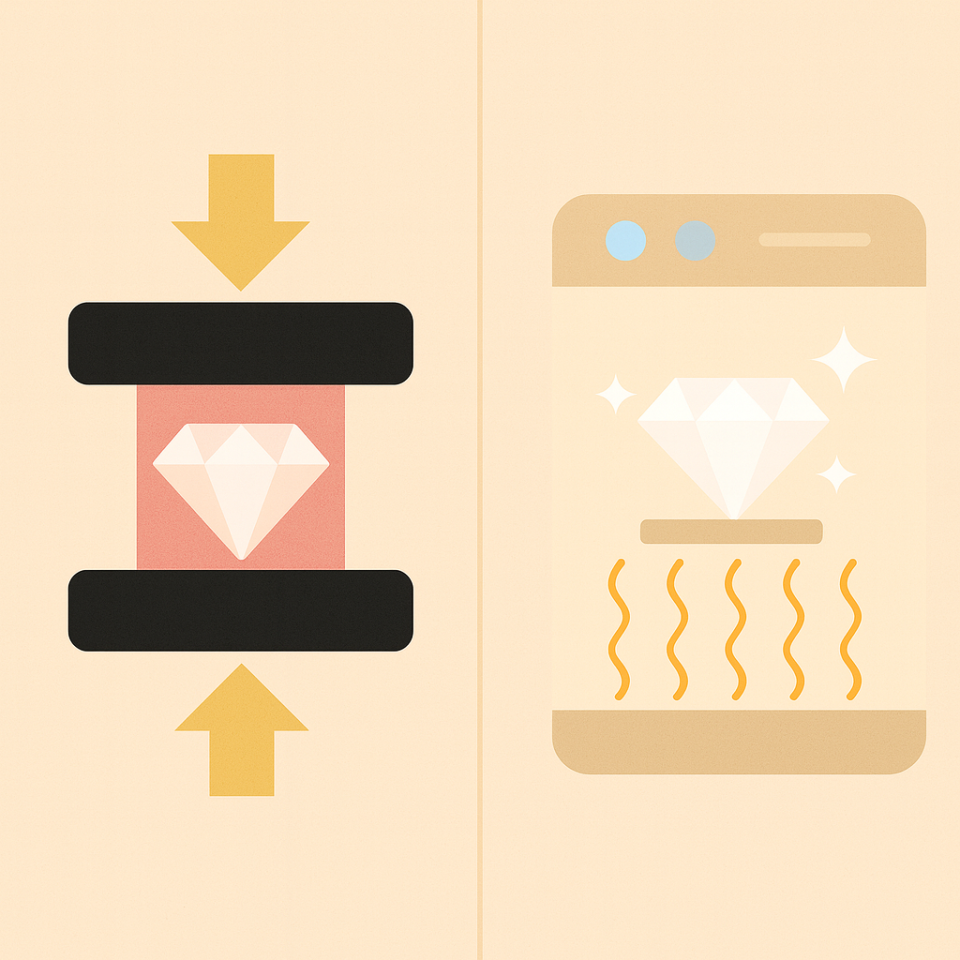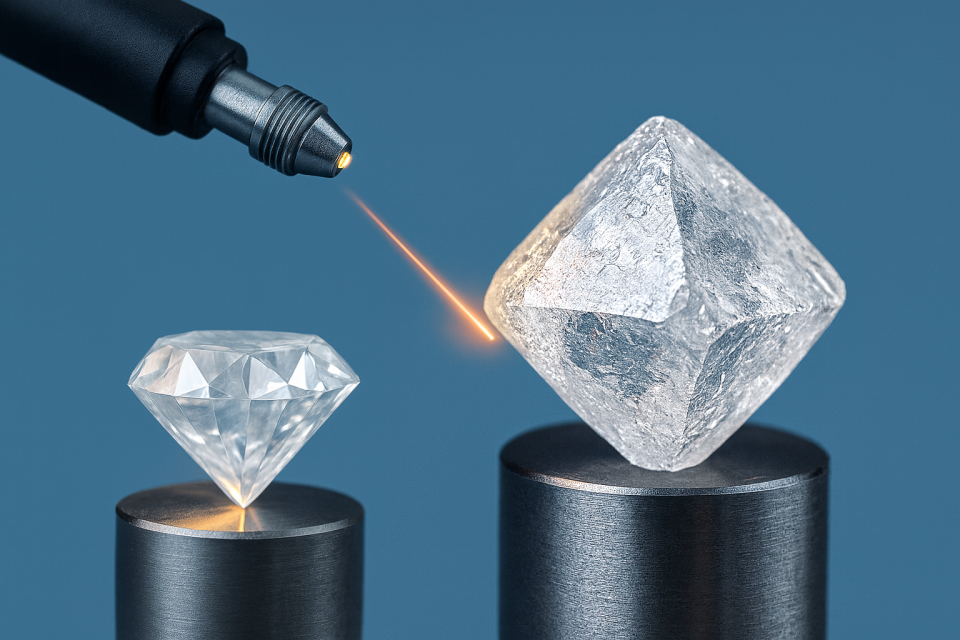Introduction
Lab-grown diamonds have transformed the jewelry industry by providing an ethical, sustainable, and affordable alternative to mined diamonds. But one of the most common questions people ask is: How are lab-grown diamonds actually made?
There are two main processes for creating lab-grown diamonds: HPHT (High Pressure, High Temperature) and CVD (Chemical Vapor Deposition). While both methods produce real diamonds that are physically, chemically, and optically identical to mined diamonds, their processes and characteristics differ slightly.
This guide explains how these two methods work and what it means for you as a consumer.
What Is a Lab-Grown Diamond?
A lab-grown diamond is not a simulant like cubic zirconia or moissanite; it is a real diamond made of pure carbon arranged in the same crystal lattice structure as natural diamonds. The key difference is the origin: instead of forming deep underground over billions of years, lab-grown diamonds are created in controlled laboratory environments in a matter of weeks.

HPHT Diamonds: The Original Method
How Does HPHT Work?
HPHT stands for High Pressure, High Temperature, a method originally developed in the 1950s to create industrial diamonds. Here’s how it works:
- Diamond Seed: A small piece of natural or synthetic diamond is placed in a carbon source, such as graphite.
- Extreme Conditions: The chamber is subjected to conditions similar to Earth’s mantle—pressures over 5 GPa and temperatures exceeding 1,500°C (2,732°F).
- Diamond Growth: Under these conditions, carbon atoms melt and recrystallize on the diamond seed, forming a larger diamond crystal.
- Finishing: After growth, the diamond is cooled, cut, and polished, just like a natural diamond.
Characteristics of HPHT Diamonds:
- Often have a yellowish or brownish tint due to nitrogen impurities, though advanced techniques can produce colorless diamonds.
- Tend to have slightly different strain patterns compared to natural diamonds when viewed under specialized equipment.
- Common in both industrial applications and jewelry.
CVD Diamonds: The Modern Alternative
How Does CVD Work?
CVD stands for Chemical Vapor Deposition, a newer method that became commercially popular in the early 2000s. Here’s how it works:
- Diamond Seed: A thin slice of diamond (usually produced by HPHT) is placed in a vacuum chamber.
- Gas Mixture: A carbon-rich gas, typically methane, is introduced.
- Plasma Activation: The gas is ionized using microwaves or lasers, breaking down molecules into carbon atoms.
- Layer-by-Layer Growth: These carbon atoms settle onto the seed, gradually building a diamond crystal one layer at a time.
- Finishing: After several weeks, the diamond is removed, cut, and polished.
Characteristics of CVD Diamonds:
- Typically have fewer metallic inclusions compared to HPHT diamonds.
- Often appear more colorless, though sometimes show a brown tint that can be treated.
- Can be produced in larger sizes more consistently.
HPHT vs CVD: Key Differences
1. Technology and Age
- HPHT: Older, established method, often used for industrial-grade diamonds but increasingly refined for gem-quality stones.
- CVD: Newer, high-tech method designed primarily for gemstone applications.
2. Color and Purity
- HPHT Diamonds: Sometimes yellowish due to nitrogen; colorless options exist but are more challenging to produce.
- CVD Diamonds: Typically colorless or near-colorless, though brown tints are possible.
3. Production Cost
- HPHT: Often less expensive for small diamonds and industrial uses.
- CVD: More efficient for larger, high-quality gem diamonds.
4. Market Perception
Both HPHT and CVD diamonds are 100% real diamonds. Most consumers cannot tell the difference without specialized equipment, and both types are certified by grading labs such as GIA and IGI.

How to Know Which One You Have?
Diamond certificates often list whether a stone was grown using HPHT or CVD technology. While this has no impact on durability or beauty, collectors and enthusiasts may be curious about the origin.
Why This Matters to Consumers
Understanding HPHT and CVD can help you:
- Make informed purchases: Know how your diamond was grown.
- Appreciate technology: Recognize the scientific achievements behind modern jewelry.
- Align values: Choose sustainable, ethical options that fit your lifestyle.
Conclusion
Both HPHT and CVD are incredible technologies that produce genuine diamonds indistinguishable from mined ones. Whether your lab-grown diamond was created using high pressure and heat or with carbon-rich plasma, it will still sparkle, endure, and symbolize love just like a mined diamond.
Ready to explore lab-grown diamonds?
Browse our Lab-Grown Diamond Collection and find the perfect gem for your jewelry today.

